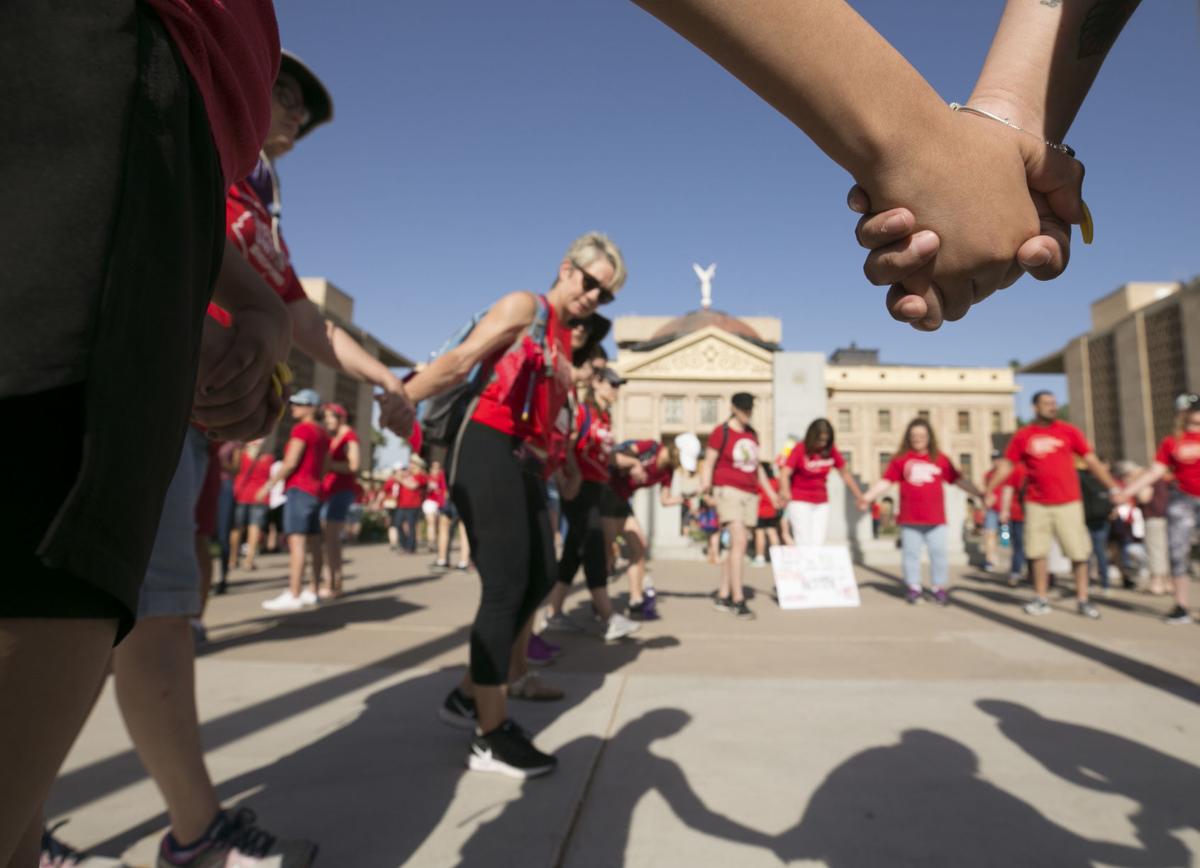PHOENIX — Arizona schools have not lived up to the 2018 promise to increase teacher pay by 20% by the 2020-2021 school year.
A new report by the state Auditor General’s Office found statewide average salaries are up 16.5%, or $7,977 a year. Only 87 of the 205 school districts hit or exceeded the 20% figure.
The 20% pay raise was based on a promise made by Gov. Doug Ducey following weeks of protests and walkout threats by teachers after the governor’s initial budget proposed a 1% increase.
Auditor General Lindsey Perry said there are various possibilities about why actual spending fell short.
One, she said, is that the funds were distributed to districts based on the number of students and not how much money each district would need to increase its average pay by 20%.
Some districts may have received less money than needed to meet the goal, and others may have received more, the report said. There was no requirement that districts had to spend this money on teacher salaries, it added.
Closely related is what Perry called “changes in teacher population.’’
“For example, most districts that had a decrease in average teacher salary also had a decrease in average years of teacher experience,’’ she said. Put more simply, if districts replaced higher paid, experienced teachers with lower paid new teachers, the total average salary decreased.
The annual report also measures the percentage of each dollar given to schools that winds up in what is classified as instruction.
For the last full school year, that rose a bit, to 55.3%, up four-tenths of a point. That compares with 53.5% statewide when the percentage hit bottom in 2016.
But Perry noted the figure is still below the 57.7% it was when her agency started doing this annual report in 2001.
The instruction figure does not paint the whole picture of spending effectively going into the classroom, however.
Student support, consisting of counselors, audiologists, speech pathologists, nurses, social workers and attendance services, ate up another 9.1% of every dollar.
There was also 5.8% for instructional support, defined as librarians, teacher training, curriculum development and instruction-related technology services. That brought what Perry considers total classroom spending up to 70.2% versus 69.3% the prior year.
What’s left is 10.4% for administration, including superintendents, principals, business managers and other staff who do everything from accounting to payroll.
Schools also spent an average of 11.7% on building maintenance, equipment repair and the costs to heat and cool buildings.
There also was 4.0% for food service and 3.7% for the cost of operating the school bus fleet.
On that last point, Perry said the pandemic had some effect.
She said some districts continued to transport students, but with much lower ridership. Others did not transport any students at all but instead used bus routes to drop off meals and homework packets to students, she said.
The report also found that the average class size dropped from 18 to 17 students, a possible side effect of lower student attendance during the pandemic.
Overall, Perry said, the number of students in public schools dropped by about 50,000 or 6% from the prior year, “which is the largest year-to-year change in students attending since 2011.’’
That decline also affected what each school district collected, as state aid is based on attendance. But Perry said districts benefited from a large influx of COVID-relief dollars.
Perry said her auditors identified a number of inefficient practices that exist at some schools.
One of the largest is operating schools far below designed capacity and maintaining excess space. She also said some districts spent more than necessary on non-instructional staffing, either employing too many people or paying employees for hours not worked.





